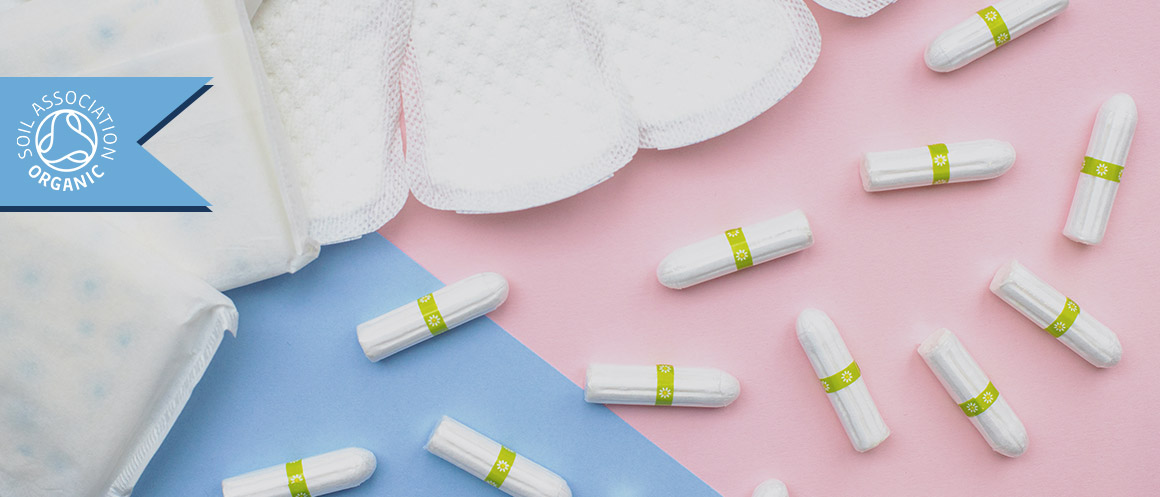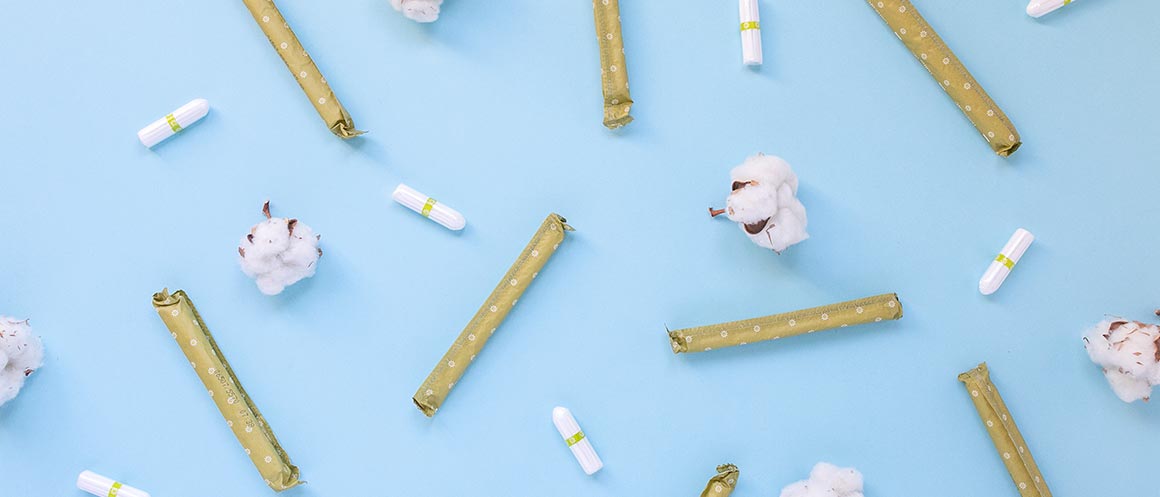Tampons, along with other menstrual products like pads, have raised concerns over their environmental impact.
With around 11,000 tampons used in a lifetime, it’s worth understanding if our monthly cycles are also taking a toll on the planet.
This article examines if tampons are truly harmful and what we can do to mitigate their effects.
Are Tampons Bad for the Environment?
Yes, tampons do pose environmental risks due to their plastic content which takes years to decompose and can pollute ecosystems if not disposed of properly.
However, steps can be taken to mitigate their impact through sustainable design, materials, and responsible consumer practices.
Key Points
- Tampons contain plastic components like applicators, which persist in landfills and waterways.
- Organic cotton tampons with cardboard applicators are more eco-friendly.
- Proper disposal prevents tampons from entering waterways and reduces environmental harm.
Plastics Pose a Threat to Marine Life
When not disposed of properly, tampons can end up in waterways and oceans where their materials slowly break down.
Both pads and tampons contain plastic components, though it remains unclear which option has the greater plastic volume.
Tampon applicators are commonly made from polyethylene and cardboard.
Meanwhile, the tampon itself contains rayon, cotton, and plastic fibers to aid absorption.
As these plastics make their way into marine environments, they risk being ingested by wildlife.
Research shows tampons could take at least 20 years to fully decompose in the ocean.
So how does ingesting plastics damage sea creatures?
Plastics contain chemical additives and can block an animal’s digestive tract, leading to starvation.
Ingesting tampon fibers has led to injury and death among marine animals and seabirds.
Keeping tampons and their applicators out of waterways needs to be a priority.
Landfill Waste from Single-Use Products
After use, most tampons and pads end up in landfills along with their plastic applicators and wrappers.
Single-use menstrual products generate waste from raw material extraction, manufacturing, and transportation before reaching landfills.
Organic cotton tampons are often compostable, but the majority contain plastics and synthetic materials like rayon.
Though female hygiene brands increasingly use recyclable packaging, most tampon and pad waste ends up in landfills.
For context, the average woman uses 11,000 tampons in her lifetime.
Multiply this by millions of women globally, and the waste footprint expands exponentially.
However, reusable products provide a waste-free alternative if accessible and affordable.
The Taxing Process of Raw Material Extraction
Extracting the raw materials that go into tampons and pads also carries an environmental toll.
Rayon comes from logging ancient forests, while cotton farming uses vast amounts of water.
Furthermore, bleaching and processing these materials involves toxic chemicals.
Ultimately, disposable tampons and pads require continuous resource extraction.
And once in landfills, their materials fail to re-enter the production cycle.
Looking at renewable materials and recycling programs could make the tampon production process gentler on the planet.
What About Organic Tampons and Pads?
Organic cotton tampons avoid pesticides and synthetic materials, making them better for your body and the earth.
Brands like Lola sell plastic-free tampon options, while Cora and other companies provide compostable pads and liners.
Organic tampons biodegrade in around 6 months – a fraction of the time for regular tampons.
Meanwhile, organic pads contain plant-based layers free from plastics and perfumes.
Though costlier, organic products provide a chemical-free experience that is kinder to the environment.
Just be sure to check the brands’ sustainability credentials before making purchases.
Are Reusable Products Greener Than Disposables?
Reusable pads, period cups, and underwear provide zero-waste alternatives to disposable tampons and pads.
Made from rubber, silicone, or cotton, reusable products generate little waste as they last for years with proper care.
Lifecycle assessments show that menstrual cups, pads, and panties have significantly lower environmental footprints.
By switching to reusables, menstruators avoid sending thousands of disposables to landfills over their lifetime.
Reusable products are more cost-effective long-term despite higher upfront costs.
The caveat is that reusable items require cleaning with soap and hot water.
Proper handling is essential to avoid exposure to blood-borne illnesses.
While accessibility issues remain, reusable menstrual products provide a waste-free option for many.
Can Tampons Be Composted?
Most regular tampons cannot be composted due to their synthetic materials.
Even though organic cotton tampons are in theory compostable, few facilities accept feminine hygiene items.
Limited research exists on the risks of composting used tampons.
However, cardboard applicators may be compostable depending on the facility.
Innovations like removable tampon capsules allow the cotton portion to be composted separately.
Ultimately, the compostability of tampons depends on their materials and the composting facility’s guidelines.
Reusable products remain the surest way to avoid landfill waste.
Is It Best to Avoid Flushing Tampons?
Unless specified as flushable, tampons should never be flushed down the toilet.
Flushing tampons can cause blockages and pollution in sewerage systems.
Tampon materials do not disintegrate like toilet paper and can snag on equipment.
Despite some brands marketing tampons as flushable, most wastewater facilities advise against flushing any feminine hygiene items.
Ultimately, disposing of tampons and pads in the bin prevents plumbing and environmental issues downstream.
Wastewater authorities request that only human waste and toilet paper be flushed.
How Can Manufacturers Reduce Their Footprint?
Brands can take steps to minimize the ecological impacts at every stage of a tampon’s lifecycle.
Sustainability initiatives include:
- Planting trees to offset carbon emissions from production.
- Powering facilities with renewable energy to reduce their energy footprint.
- Using organic materials and avoiding synthetic chemicals.
- Switching to recyclable, plastic-free packaging.
- Investing in waste collection programs to stop tampons entering waterways.
- Designing applicators from recycled or biodegradable plastics.
- Providing disposal guidelines on packaging to encourage responsible behaviors.
Through innovation and investment, manufacturers can narrow the environmental gaps in their products.
However, reducing the consumption of disposables remains imperative.
What Can Consumers Do to Help?
Individuals can also take steps to minimize their impact:
- Consider switching to reusable products to lower lifetime waste.
- Opt for plastic-free organic tampons if sticking with disposables.
- Wrap used items in biodegradable bags before binning.
- Never flush tampons, pads, or applicators.
- Dispose of packaging thoughtfully and recycle where possible.
- Support eco-conscious brands and buy sustainable self-care items.
- Learn about the composition of different menstrual products to make informed choices.
While responsibly made tampons have their place, reducing our reliance on disposable items helps lighten our footprint.
Are Tampons Safe for the Environment?
The materials in tampons, particularly plastics, raise concerns over their safety for ecosystems.
As tampons break down in landfills and waterways, they can release chemicals that pollute soil and groundwater supplies.
Rayon and synthetic fibers contain toxic additives and dyes that may leech out over time.
Furthermore, the plastic applicators and wrappers littering beaches and oceans break down into microplastics.
These tiny plastic particles make their way into the food chain, accumulating in fish and bird tissues with unknown health consequences.
Ultimately, tampons persist in the environment for many years and contribute to plastic pollution in both terrestrial and marine habitats.
Their composition of non-biodegradable, synthetic materials poses risks to environmental and human health.
Are Tampons Better Than Pads for the Environment?
There is no clear verdict on whether tampons or disposable pads are more eco-friendly.
Both contain similar plastic components and require significant natural resources to produce.
However, some estimates suggest pads have a greater plastic volume based on their larger size.
Tampons produce less landfill waste peruse, but pads may have a lower carbon footprint from manufacturing.
And while tampons contribute more to marine plastic pollution, the microplastics in pads also escape into waterways when landfilled.
Ultimately, all disposable menstrual items have environmental costs.
However, improving the sustainability of their materials and reducing usage can lessen their impact.
Reusable products remain the most eco-friendly option by avoiding waste entirely.
Why Are Tampons Unsustainable?
Several factors make most tampons an unsustainable product:
- They are designed for single-use and generate constant waste.
- Most tampons contain plastics and synthetic materials that do not biodegrade.
- Continuous demand drives resource-intensive production and global distribution.
- Used tampons end up in landfills or as marine litter after use.
- No recycling options exist due to contamination risks.
- Alternatives like menstrual cups have up to 100 times lower lifetime impacts.
While organic cotton tampons are an improvement, all disposable menstrual products struggle to reconcile efficacy with sustainability.
Ultimately, tampons are unsustainable because their current design and materials conflict with circular production principles.
However, reusables and plastic-free options point the way towards better harmony between function and ecological responsibility in feminine care.
The Bottom Line
Tampons contain plastics that take years to decompose, posing dangers to marine life.
Their raw material extraction and waste footprint raise environmental concerns.
However, reusable options and sustainable production methods can reduce tampons’ harm.
Ultimately, tampons provide an essential product that must balance efficacy with eco-friendliness.
Through consumer awareness and manufacturer responsibility, access to safe and sustainable menstrual care can improve globally.
However, reducing society’s dependence on disposable items remains the priority for lightening our planetary impact.
FAQ
What Are Eco-Friendly Alternatives to Tampons?
Organic cotton tampons, menstrual cups, reusable pads, and period underwear provide more sustainable options that generate less waste and avoid plastics. While costlier initially, these eco-friendly alternatives have a lower lifetime impact.
What Should You Avoid Flushing Down The Toilet?
Only human waste and toilet paper should be flushed. Tampons, pads, applicators, and wipes should always go in the bin even if labeled flushable, as they can clog sewer systems and cause pollution.
What Can You Do With Used Tampons If Not Flushing Them?
Used tampons should be wrapped in a biodegradable bag or tissue before placing them in a bin. Never flush them, even if the packaging says they are flushable. Disposing in a bin prevents plumbing issues and stops tampons from entering waterways.
Here at GreenChiCafe, we are passionate about protecting the natural world and living sustainably. We hope this article provides useful information on the environmental impact of tampons and how we can make conscious choices to care for the planet. Please check out the GreenChiCafe website for more content on leading an eco-friendly lifestyle in harmony with nature.

Annie is a passionate environmental writer and activist. She has been writing about sustainability, conservation, and green living for over 15+ years. Annie is dedicated to raising awareness about environmental issues and providing practical tips for living an eco-friendly lifestyle. When she’s not writing, you can find her volunteering with local environmental organizations, teaching workshops on zero waste living, or exploring nature. Feel free to get in touch with Annie: annie@greenchicafe.com



